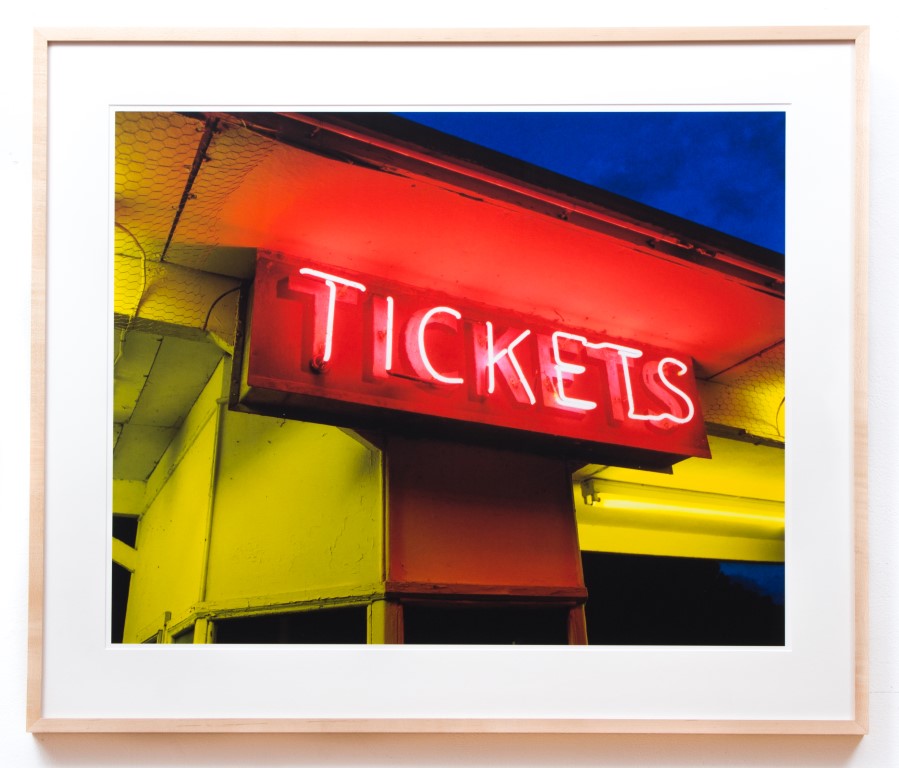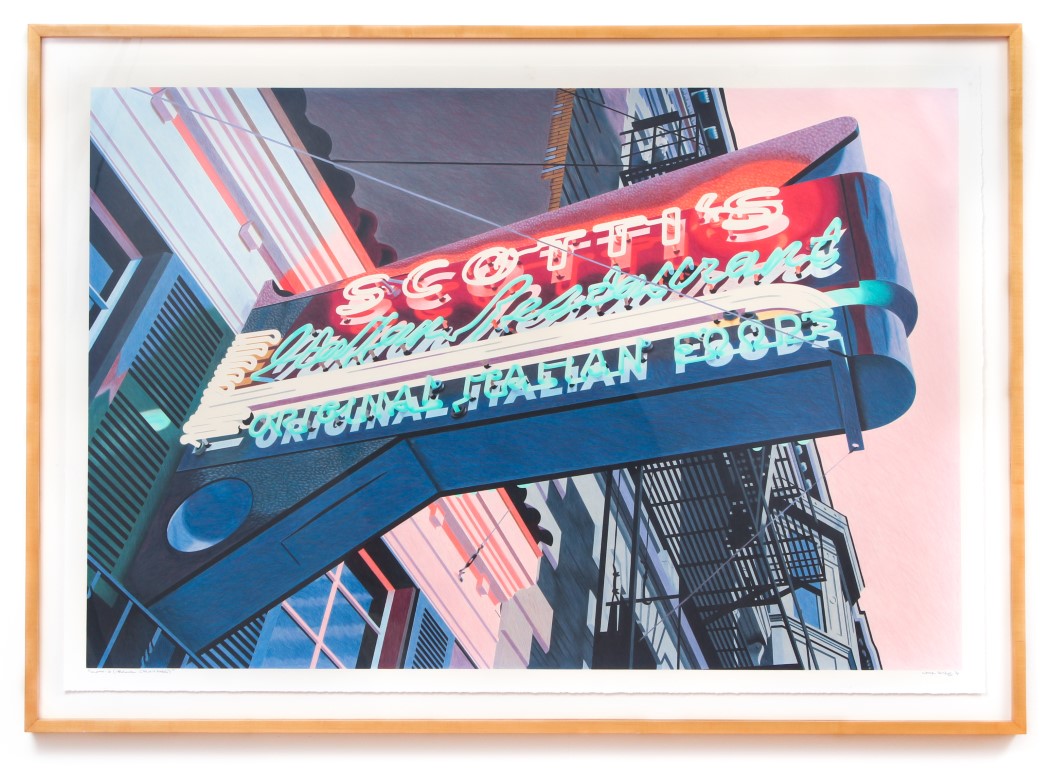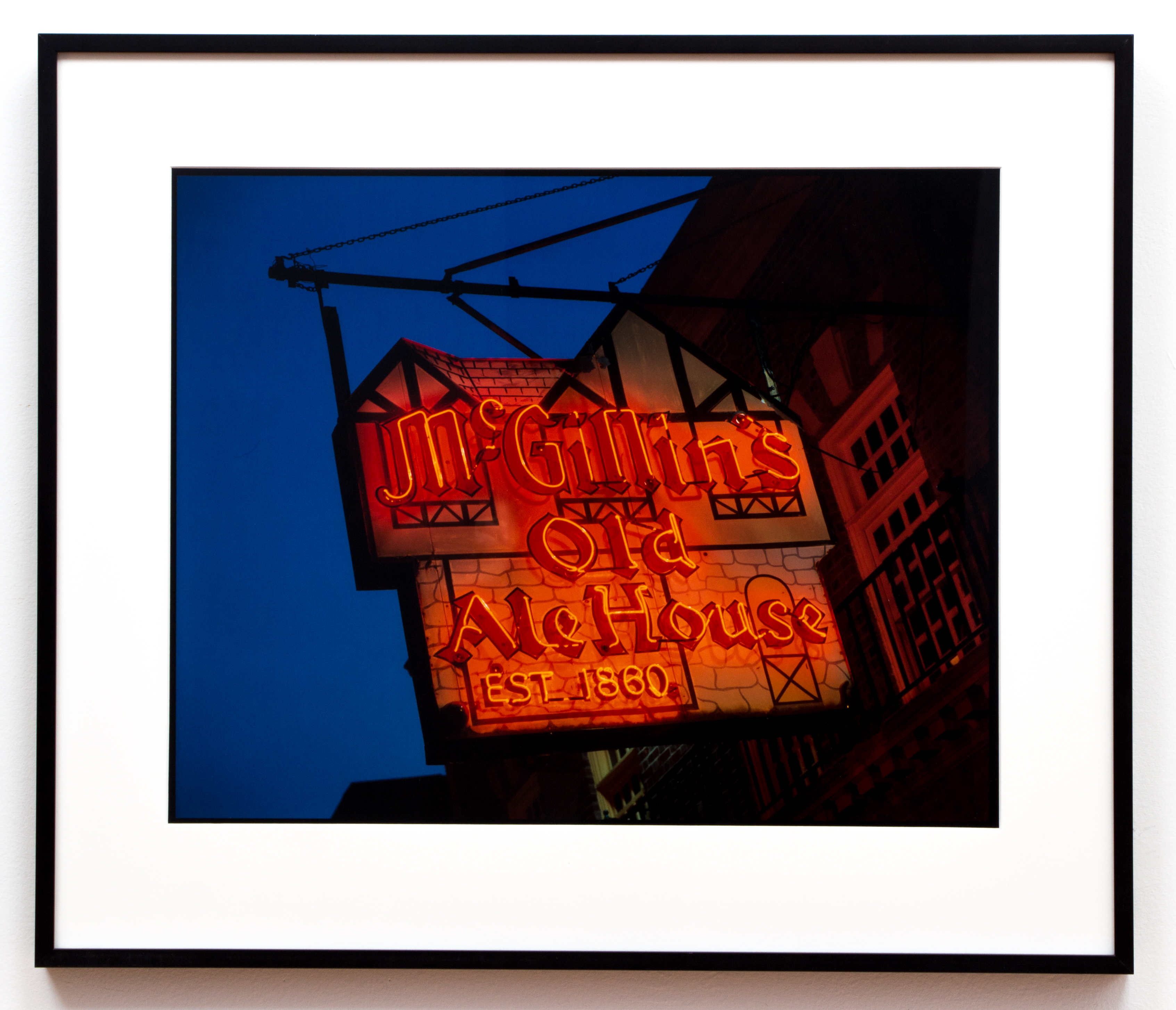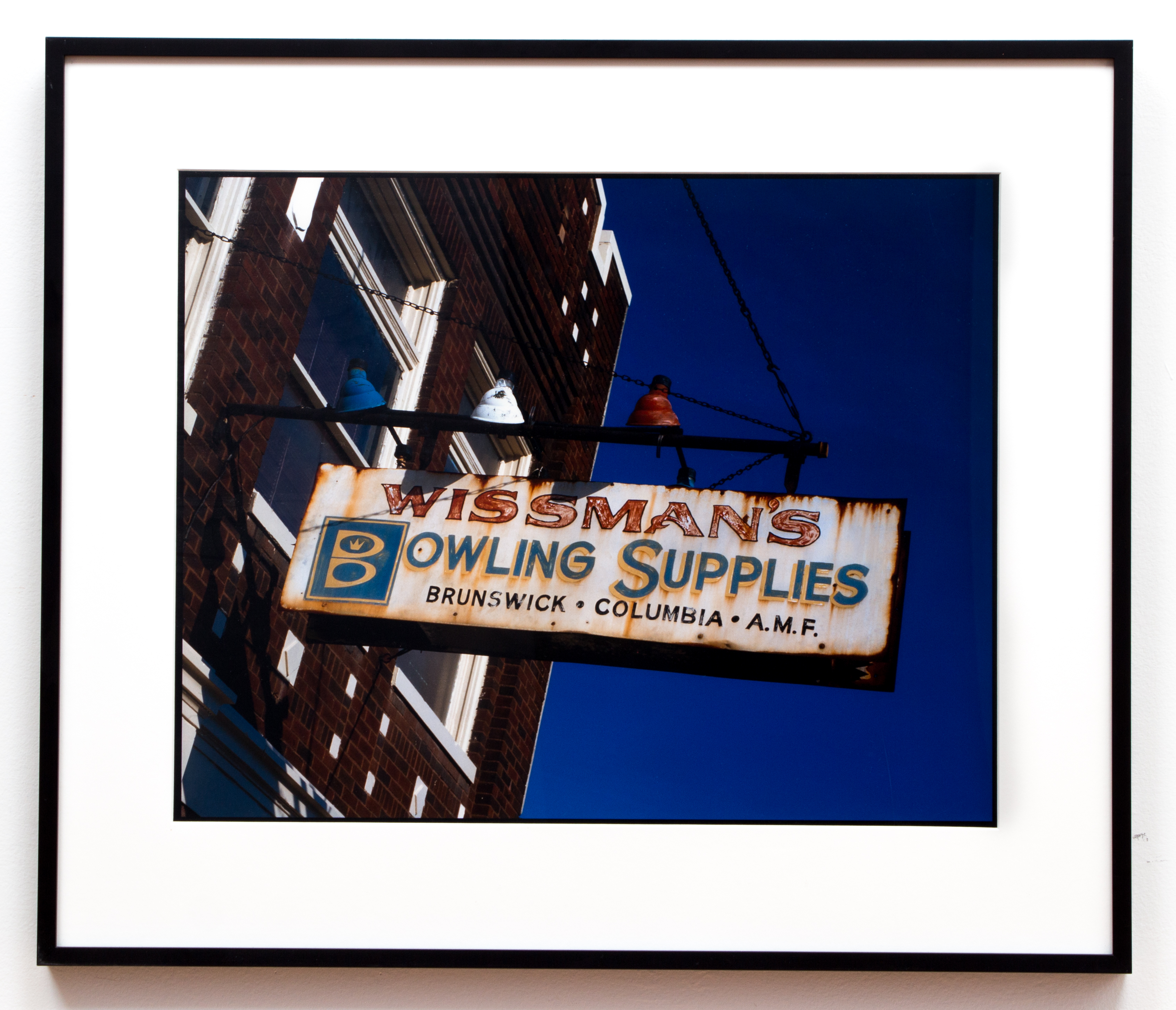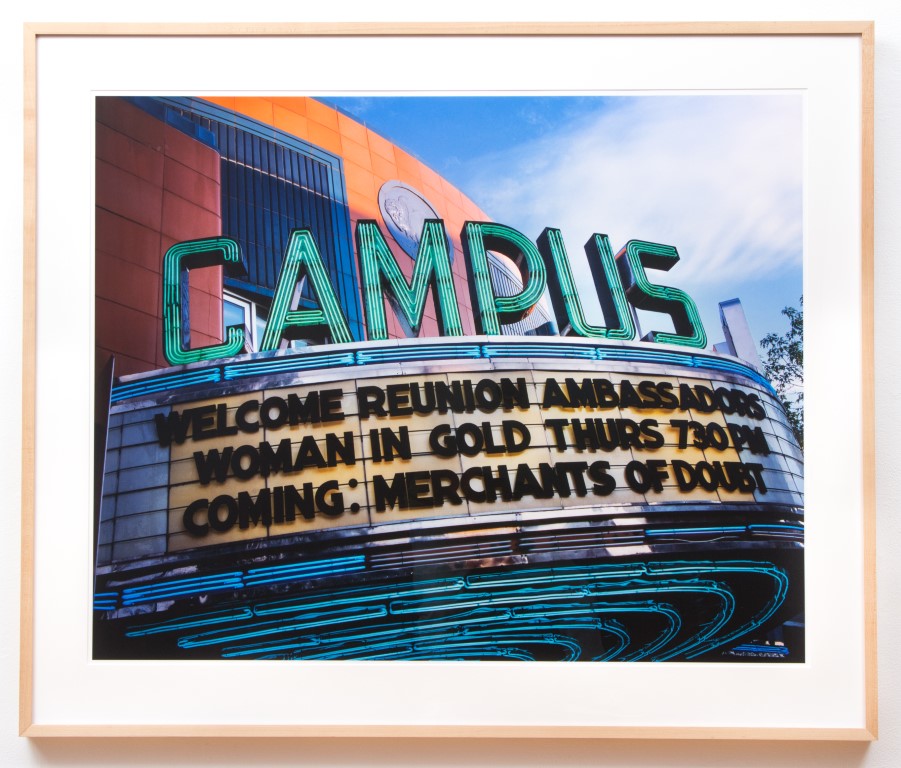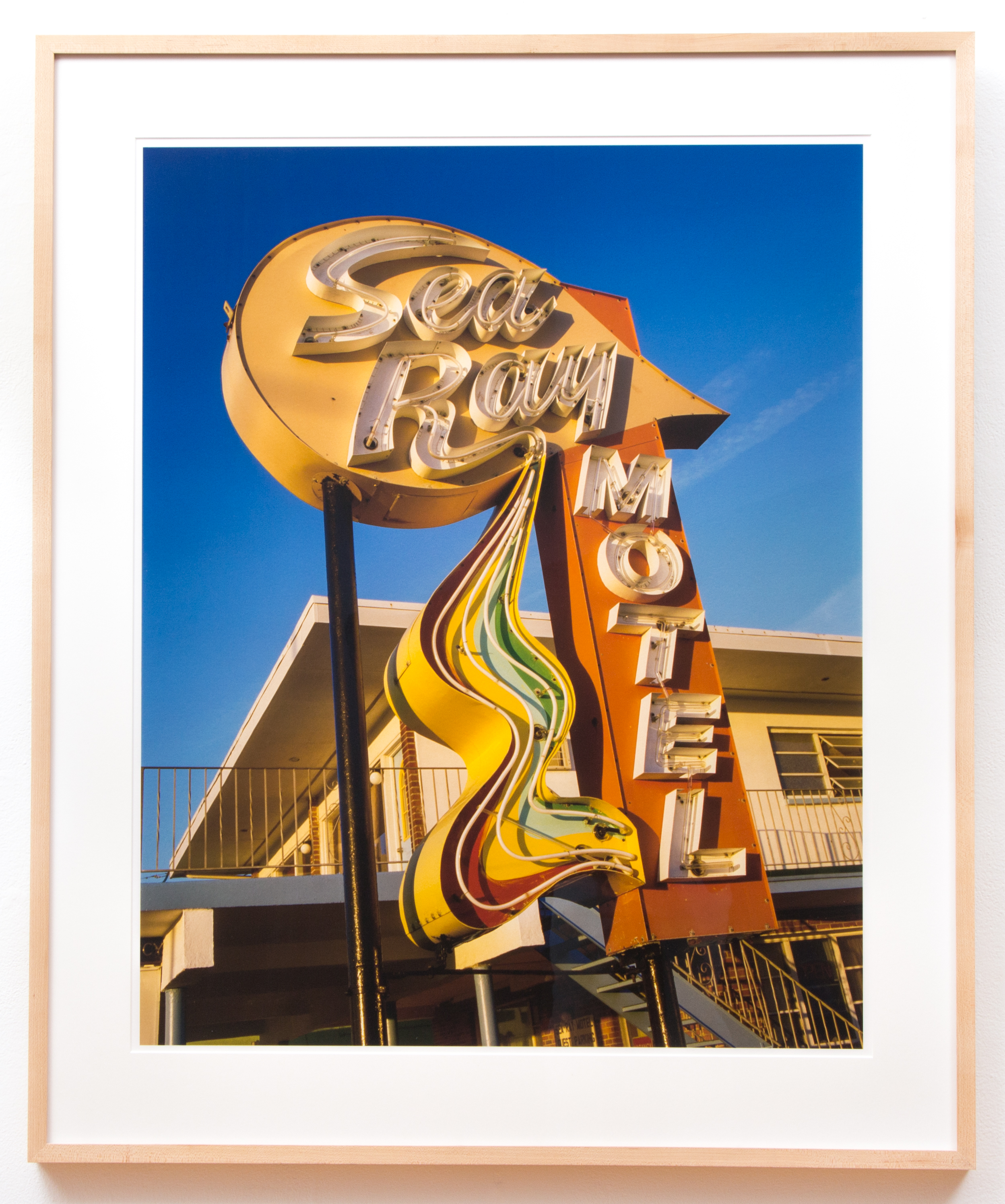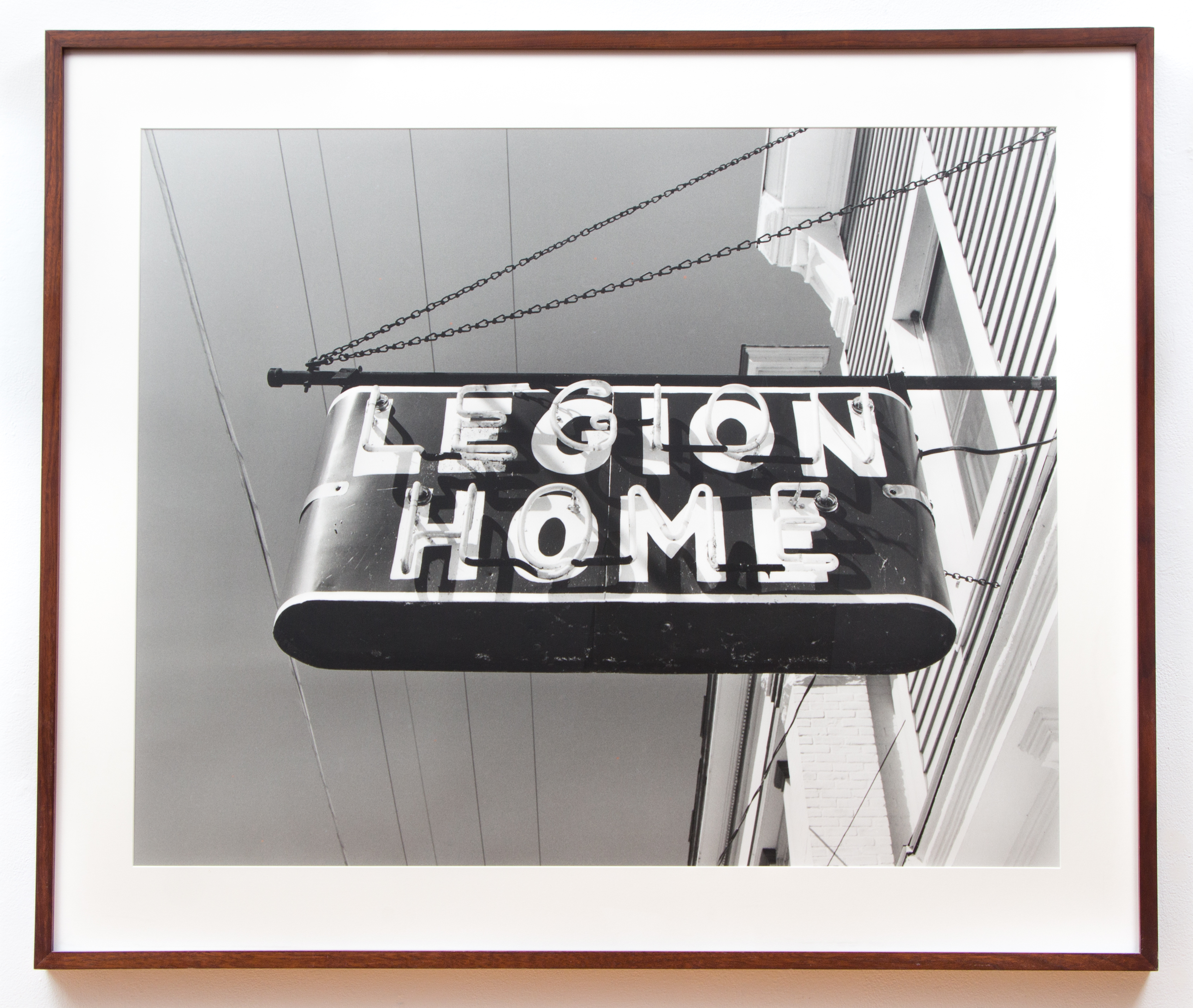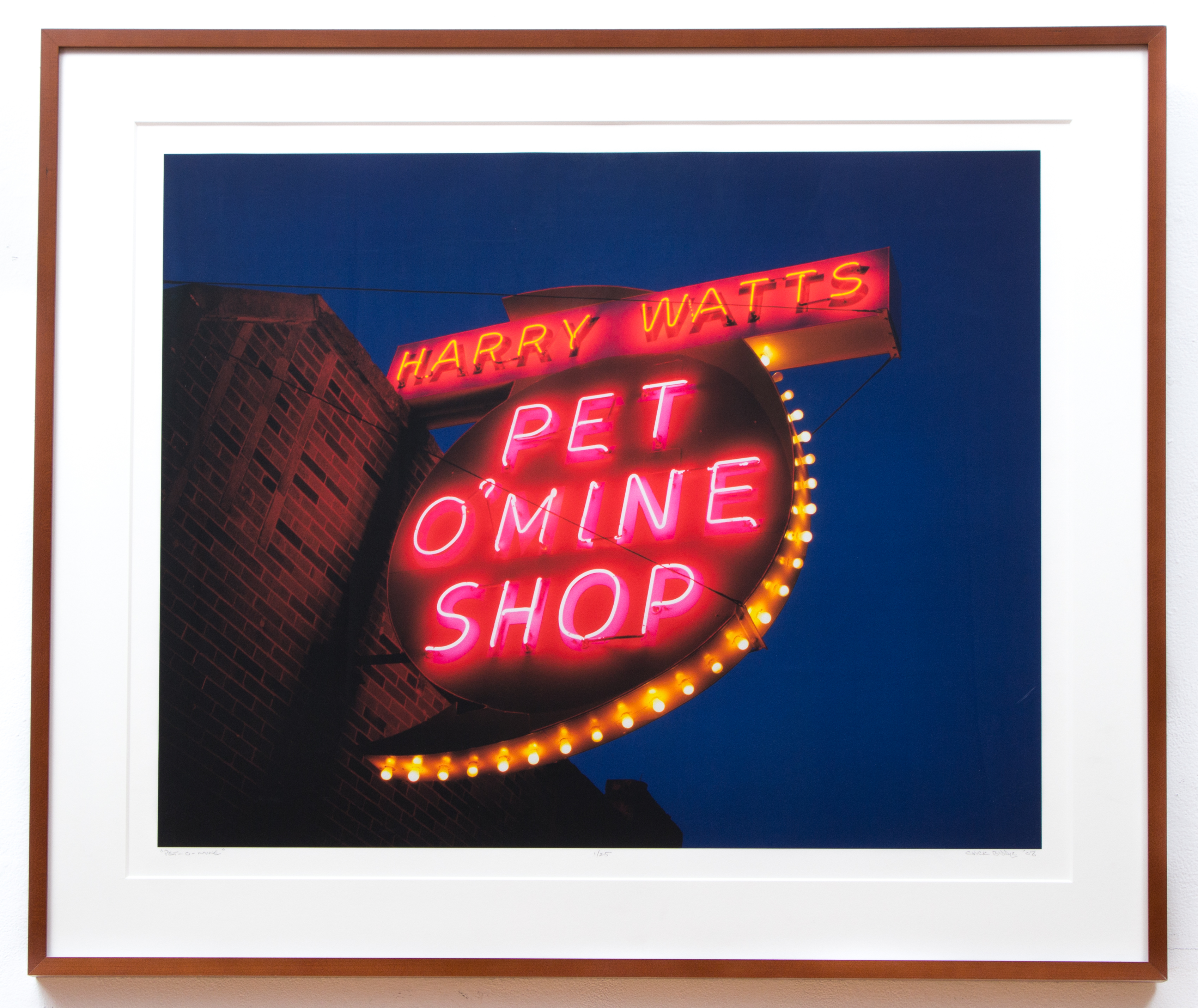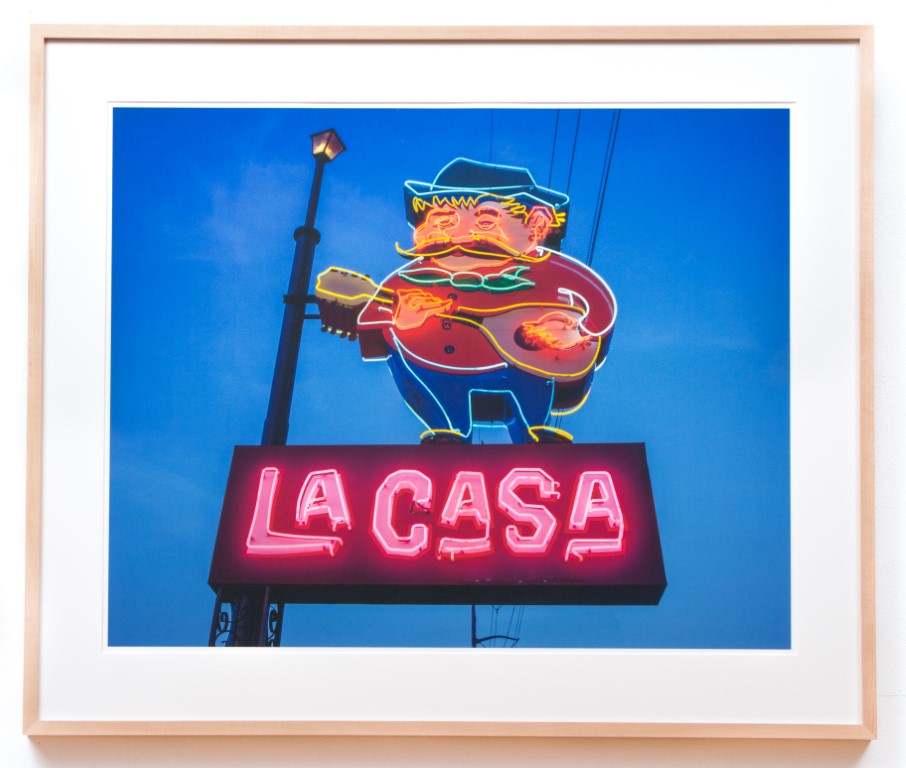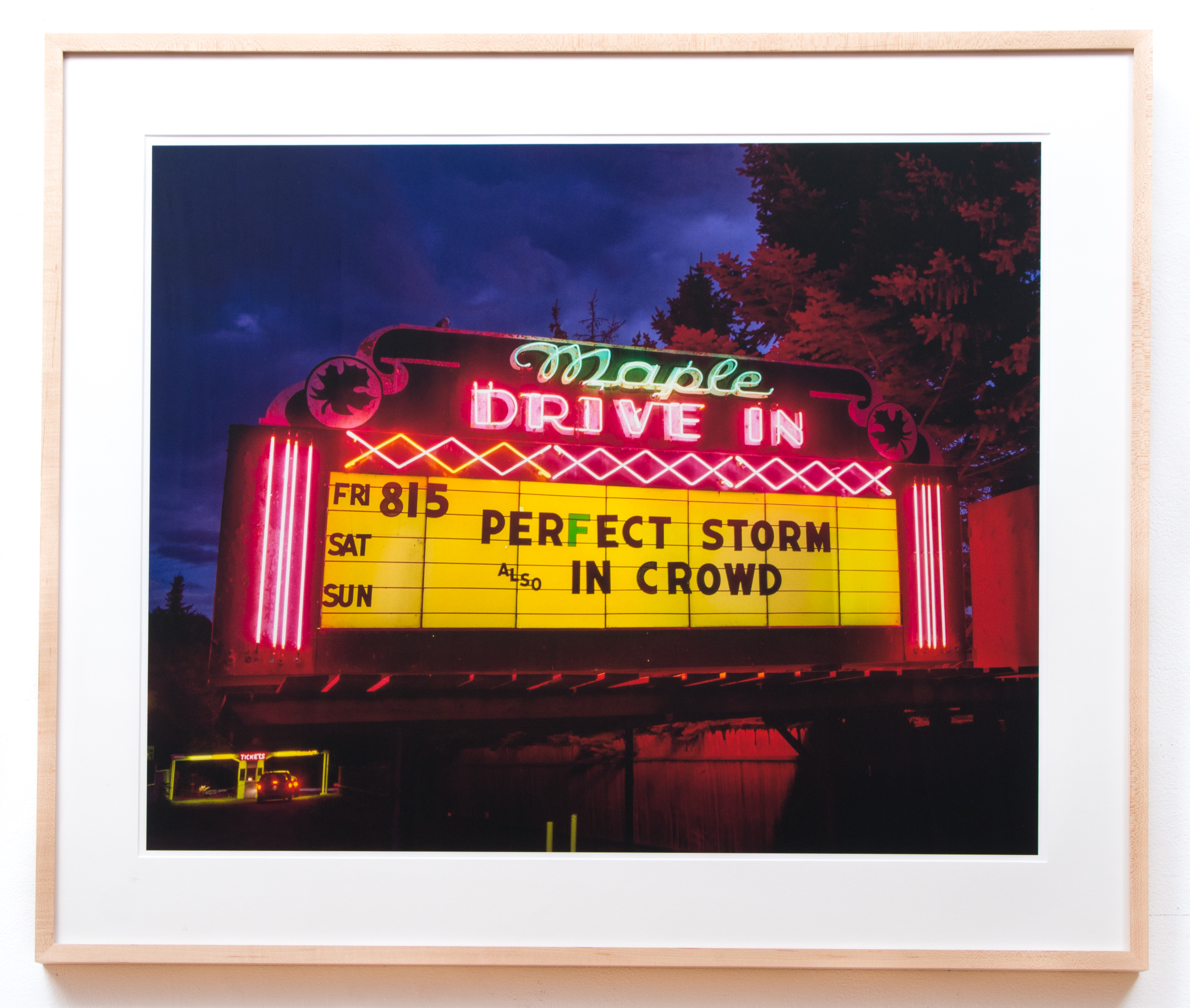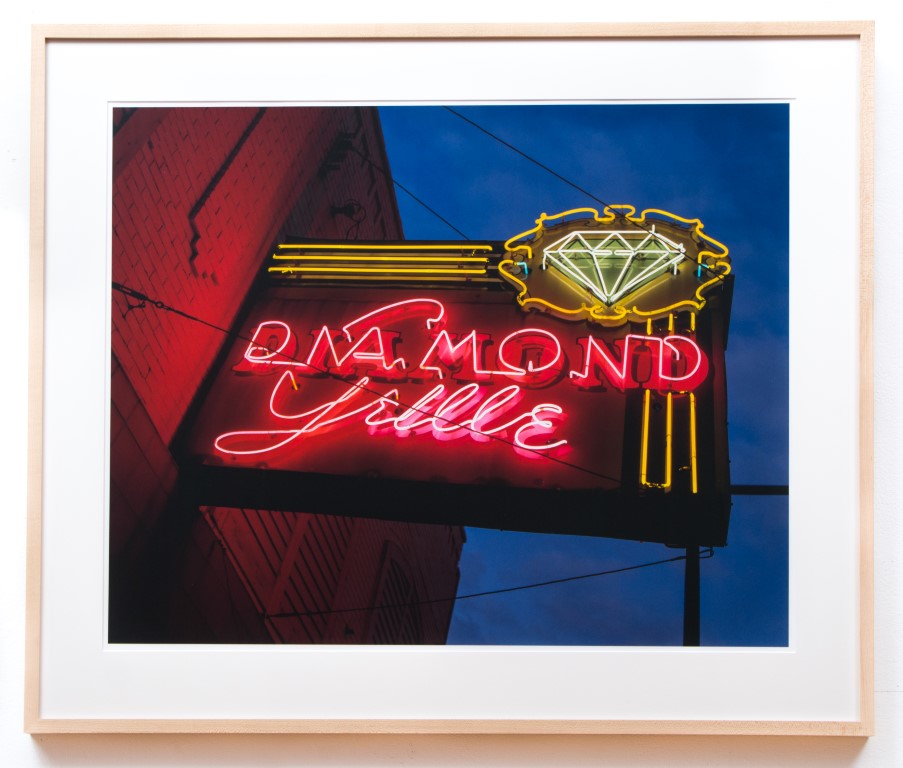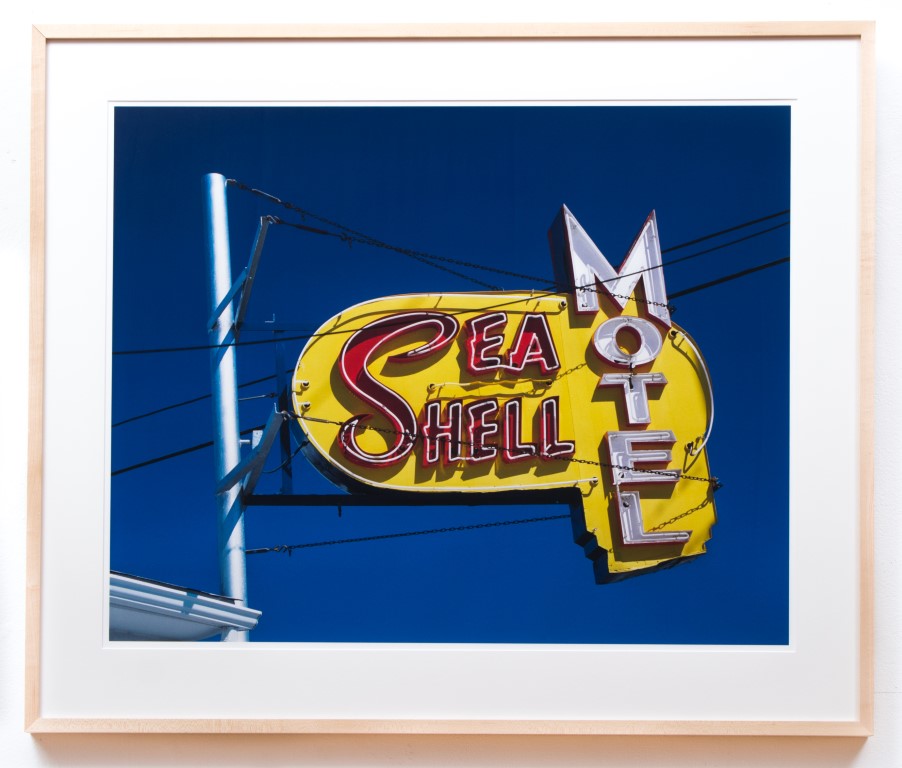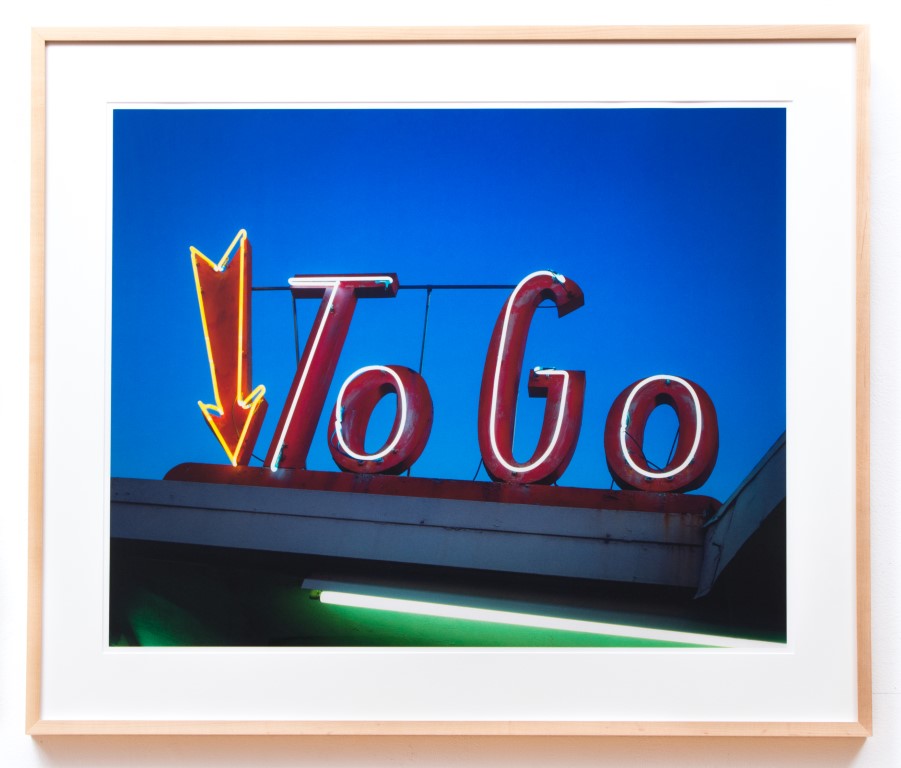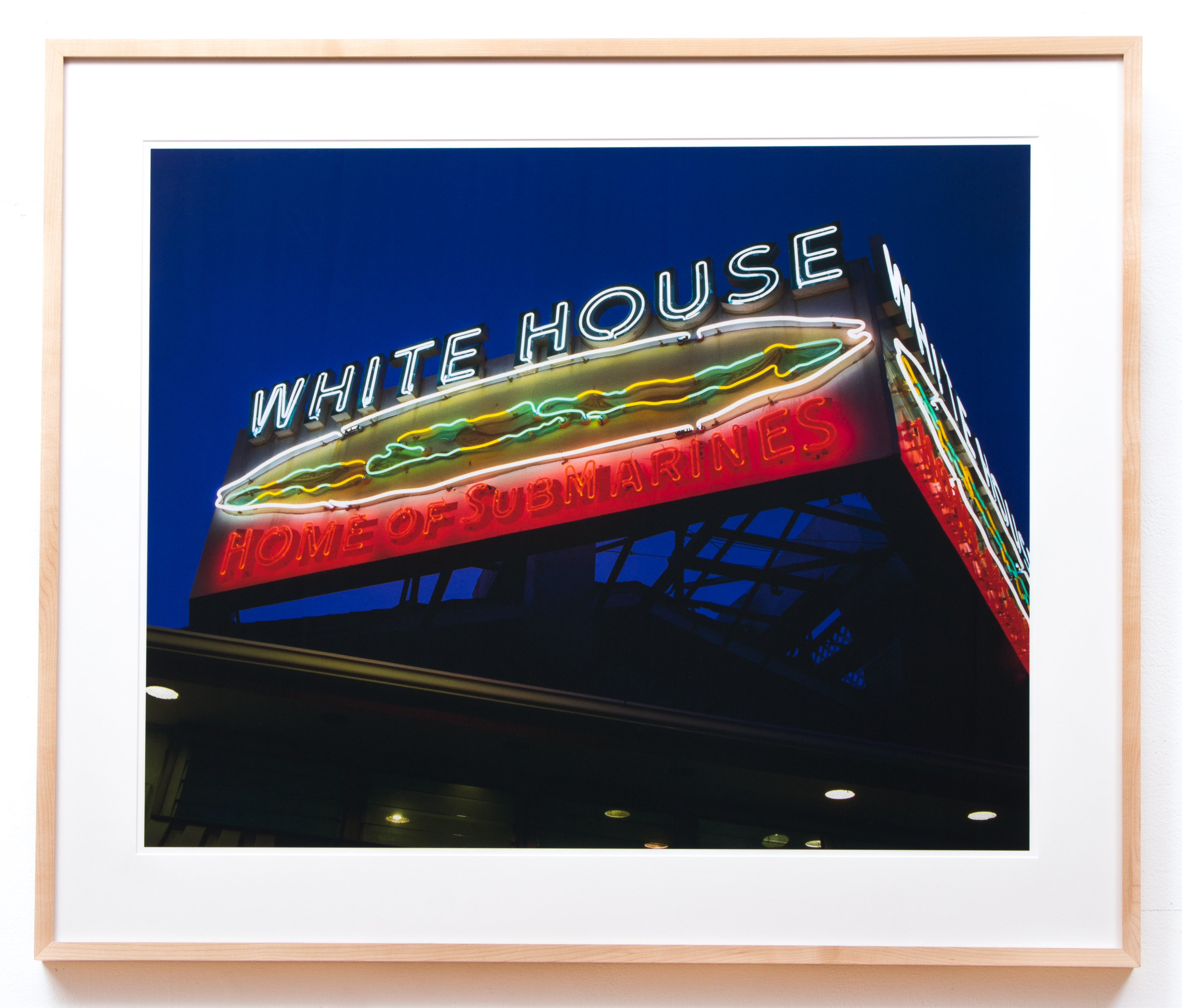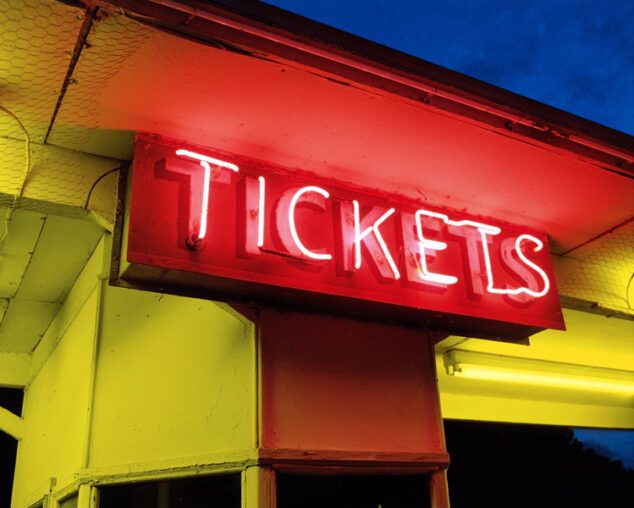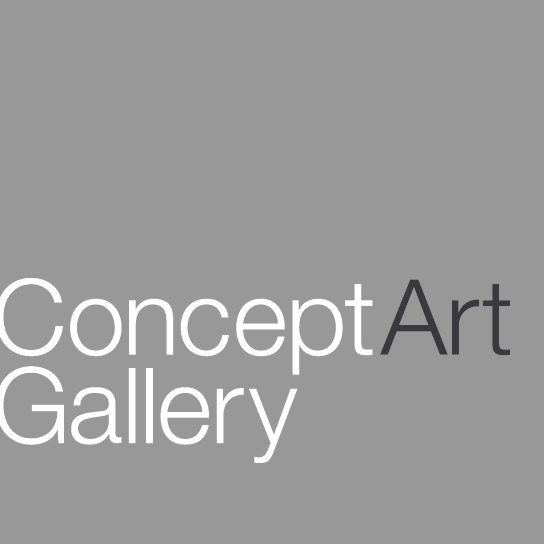
Charles Biddle
Meet the Artist
Almost four decades ago, Pittsburgh artist Chuck Biddle began photographing historically or aesthetically significant neon signs as source material for hyper-realistic drawings. He began regarding the photographs as finished work in the 1990s, realizing that the medium allowed him to directly express color and design and communicate more information in less time. He has noticed that “the signs have become fewer and farther between” since he began documenting them.
Biddle’s meticulously printed images capture the rapidly disappearing neon oases along America’s “blue” highways. They preserve elements of modern signage: typeface, logos, neon, lighting and placement, and especially, the saturated colors. The photographs also reframe and transform the historic-modern signs into abstract studies of saturated color and geometry.
There is a close personal connection between the artist and his subject. As a child, Biddle lived above the Gondolier Restaurant, which his parents founded in 1955. Mid-century modern aesthetics permeated the space: boomerang-patterned Formica, natural wood, recessed lighting, plate glass, shiny chrome, and a neon sign. It was “bold, hypnotic and beautiful,” Biddle fondly recalls.
So much has changed since I began photographing signs in the late seventies. Locally the collapse of steel affected many of the places I knew well from an early age. As I started from a place of having the ground shift beneath my feet, I became committed to preserving what I could externally with signs as a subject and internally with the affection I felt for places that were going away. It was the complete opposite of detachment, a condition foreign to me.
My work has been a way to hold on to something you love that you know will inevitably change. It’s not about living in the past as much as it’s sharing something meaningful in the present and for the future. It’s the fact that these places and signs existed, and that they mattered in my life.
Charles Biddle graduated from Indiana University of Pennsylvania. He has exhibited frequently with the Associated Artists of Pittsburgh, including in several Annuals at Carnegie Museum of Art. His work is in the collections of Heinz Architectural Center, Carnegie Museum of Art; Westmoreland Museum of American Art; Pittsburgh Public Schools; and Howard Heinz Endowment, among others.
